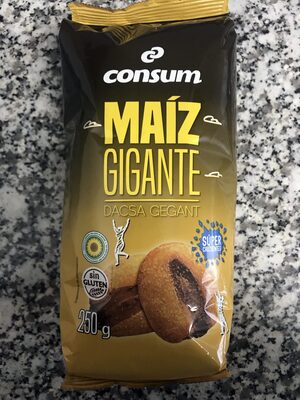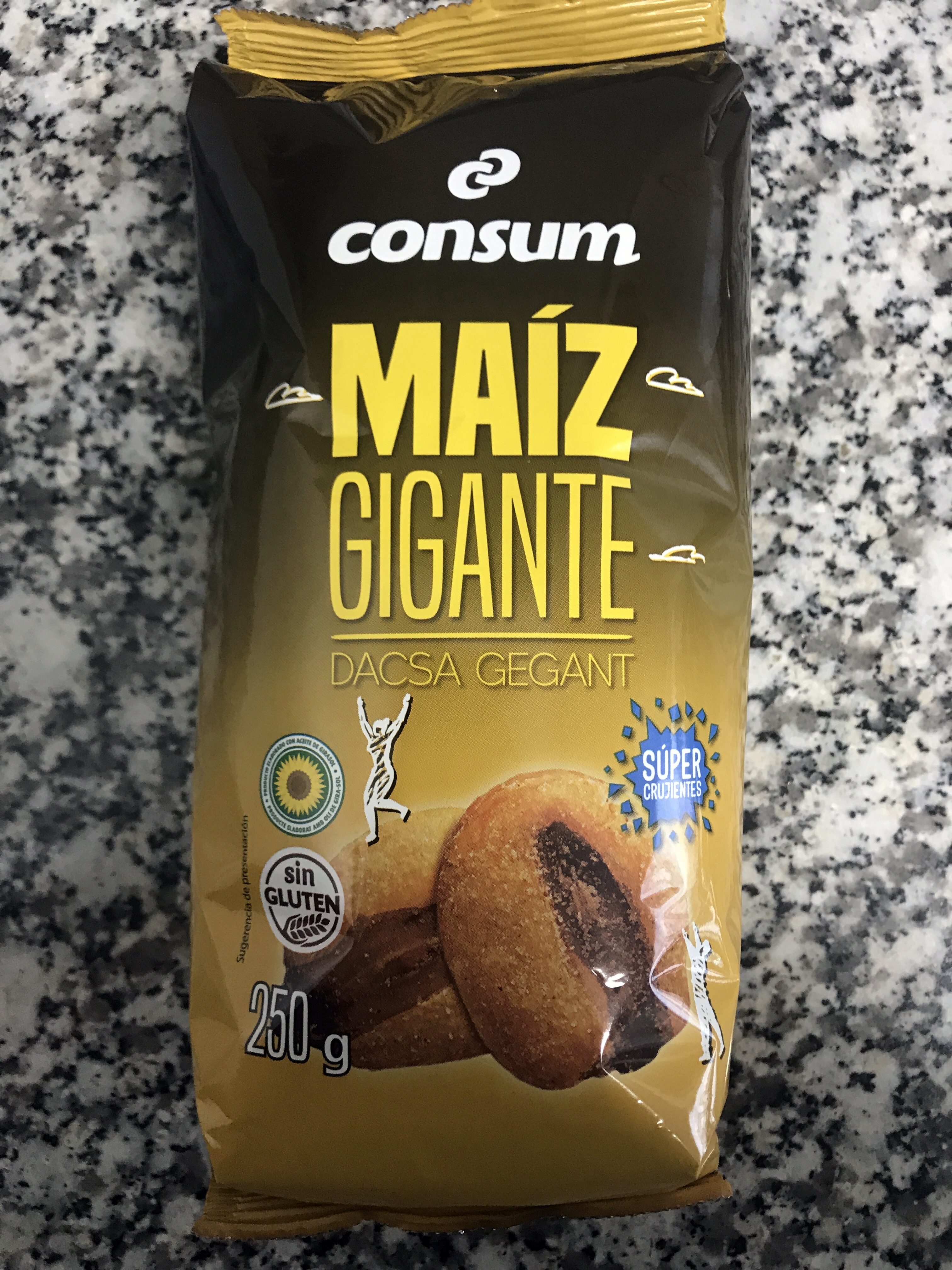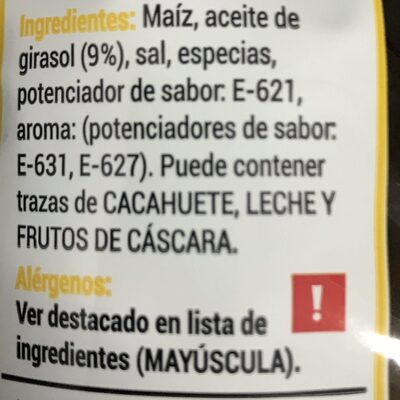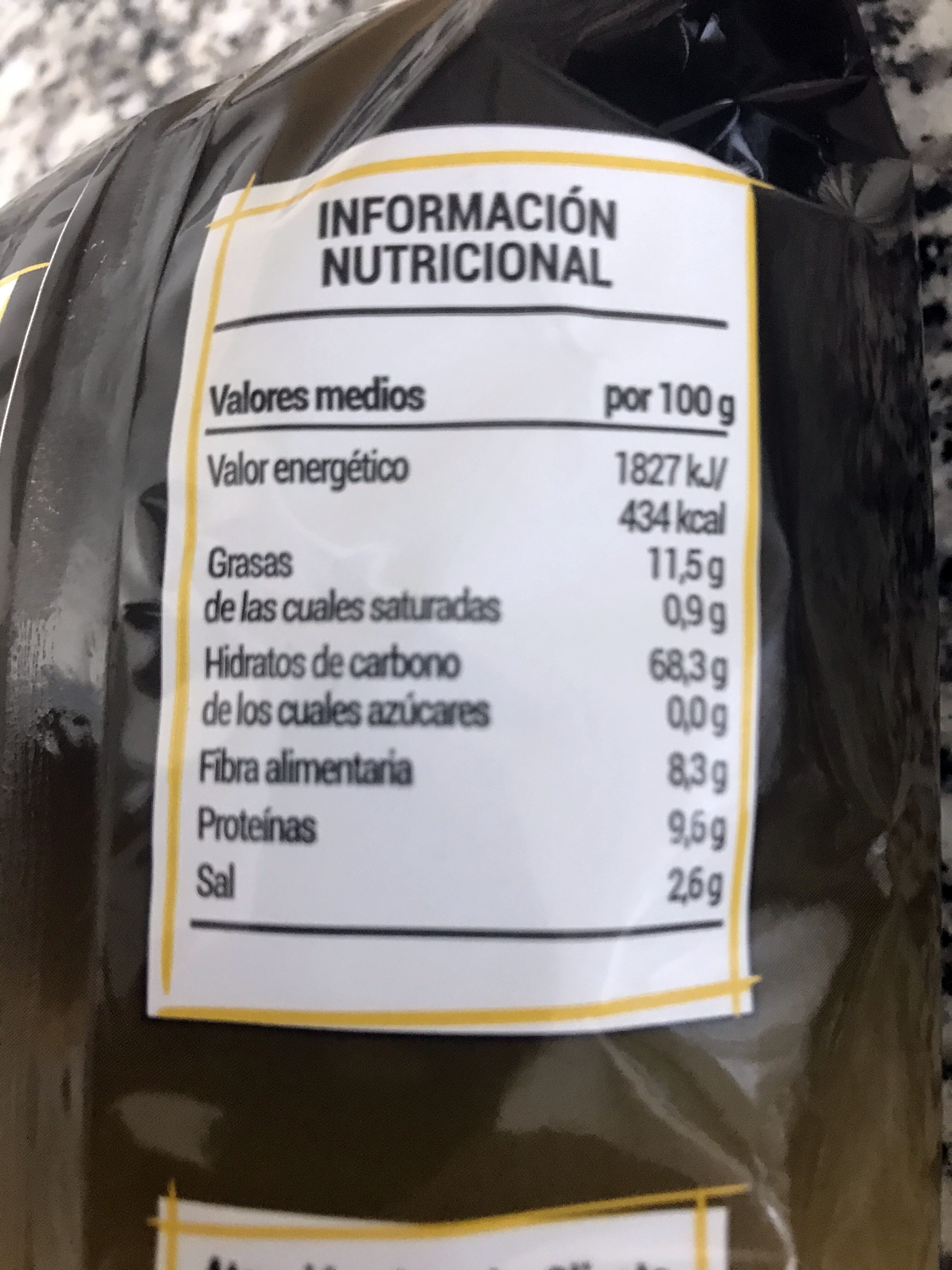Maíz gigante - consum - 250g
This product page is not complete. You can help to complete it by editing it and adding more data from the photos we have, or by taking more photos using the app for Android or iPhone/iPad. Thank you!
×
Barcode: 8414807503558 (EAN / EAN-13)
Common name: Maíz gigante frito con sal
Quantity: 250g
Packaging: Pack
Brands: Consum
Categories: Plant-based foods and beverages, Plant-based foods, Snacks, Cereals and potatoes, Salty snacks, Seeds, Cereals and their products, Cereal grains, Corn, Corn grain
Labels, certifications, awards:
No gluten, Not advised for specific people, Green Dot, Not recommended for children under 3 years, With Sunflower oil
Origin of ingredients: Peru
Stores: Consum
Countries where sold: Spain
Matching with your preferences
Environment
Carbon footprint
Packaging
Transportation
Report a problem
Data sources
Product added on by kiliweb
Last edit of product page on by alia.
Product page also edited by elcoco, hungergames, inf, maneltapia, openfoodfacts-contributors, packbot, roboto-app, tacite-mass-editor, teolemon, virginiedema, yuka.UzQwTkdZTS9vdllZdjlvQjJqMkowTXBwMkxLc1lUbXRLYllOSWc9PQ, yuka.ZEpsZU5JNHR1ZHdGc3ZRY3pqSHQzZDlybHBhZ1IzcXBLL01QSVE9PQ.











